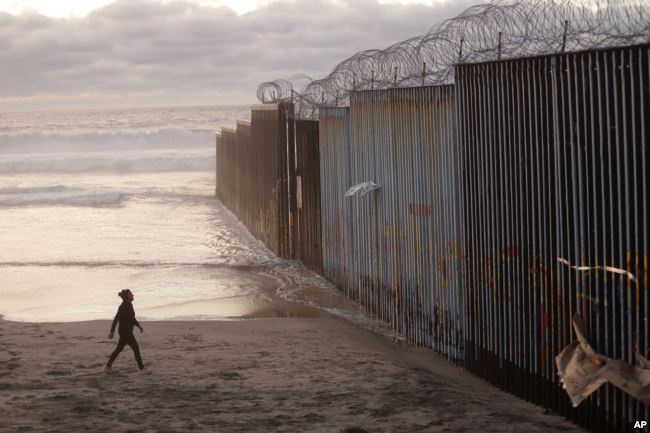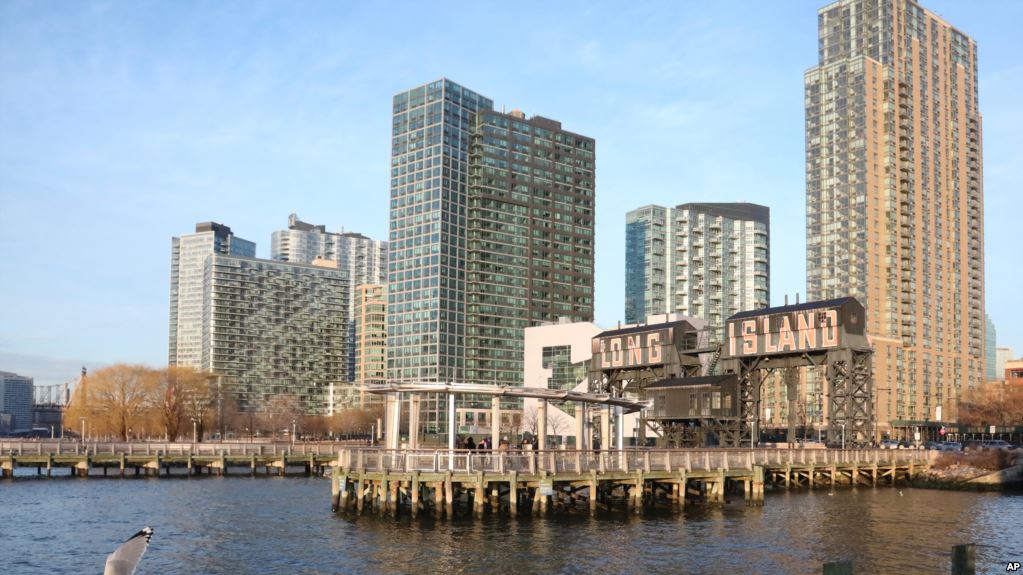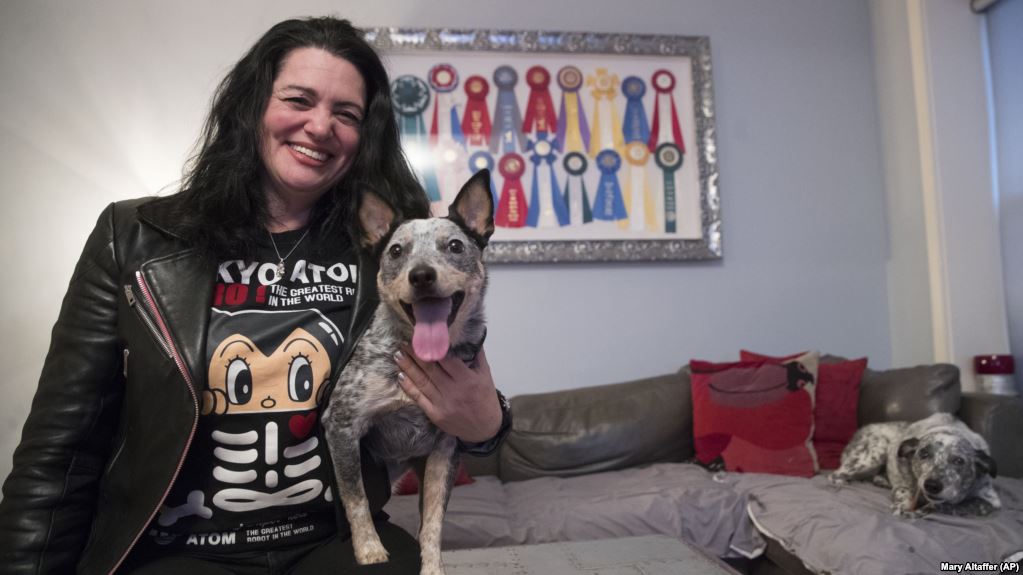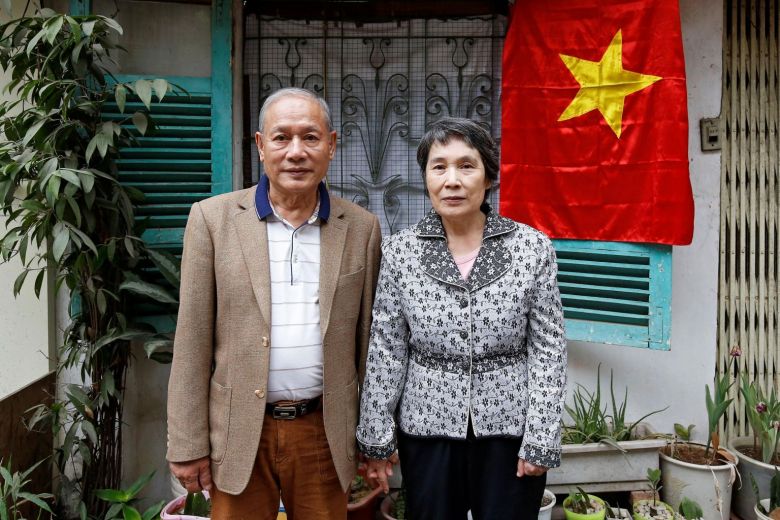뉴스&스피킹(영자신문)
하루 10분이면 영어에 대한 두려움을 극복하고 누구나 유창하게 영어를 구사하실 수 있습니다.
-
 Trump Declares National Emergency to Build the Wall American President Donald Trump on Friday declared a national emergency so that he can get the money needed to build a wall along the nation’s border with Mexico.
Trump Declares National Emergency to Build the Wall American President Donald Trump on Friday declared a national emergency so that he can get the money needed to build a wall along the nation’s border with Mexico.
The move is seen as a way to go around Congress. It is sure to face opposition from legislators.
Speaking from the White House, Trump said he is declaring the national emergency because of, in his words, “an invasion of our country with drugs, with human traffickers, with all types of criminals and gangs.”
Trump added that he is planning to use money from the military and other parts of the government to pay for the building of the wall.
As a presidential candidate, Trump often said that Mexico would pay for such a wall.
Acting White House Chief of Staff Mick Mulvaney said the president “will have access to roughly $8 billion worth of money that can be used to secure the southern border.”
Trump had demanded $5.7 billion for the wall. But Congress, which is powered with making spending decisions, only provided $1.4 billion for barriers.
House Speaker Nancy Pelosi and Senate Democratic Leader Chuck Schumer quickly denounced the move as an “unlawful declaration over a crisis that does not exist.”
The two leaders released a joint statement while Trump was still giving his speech. They said, “The President’s actions clearly violate the Congress’s exclusive power of the purse, which our Founders enshrined in the Constitution. The Congress will defend our constitutional authorities in the Congress, in the Courts, and in the public, using every remedy available.”
Trump admitted that his declaration of a national emergency will face opposition in the courts. He said, "Sadly, we'll be sued and sadly it will go through a process and happily we'll win."
National Emergency Act
The president defended his decision, saying other presidents have declared national emergencies in the past.
In 1976, Congress passed the National Emergency Act, which gave presidents special powers during a crisis. Congress can end a state of emergency with a joint resolution and the president’s signature. If the president vetoes the resolution, Congress would need two-thirds of lawmakers to vote to end the declaration.
American presidents have declared national emergencies 59 times since 1976.
President Jimmy Carter made the declaration as Iran took American hostages in 1979. Ronald Reagan used the power to ban trade with Nicaragua in 1985.
In 1990, President George H.W. Bush blocked financial dealings with Iraq. In 1996, Bill Clinton used the power after two airplanes were shot down near Cuba. George W. Bush declared a national emergency after the terrorist attacks on Sept. 11, 2001.
And President Barack Obama used the special power in 2011 to freeze the assets of Libyan leader Muammar Qadhafi.
Trump has declared national emergencies three other times: in December 2017 against Myanmar generals for their part in the Rohingya refugee crisis; in September 2018 against persons related to Russian interference in the 2016 U.S. presidential election; and in November 2018 after the Nicaraguan government acted against protesters.
But until Friday, no American president in history had used the power to get additional money to pay for projects without the support of Congress.View -
 Amazon’s Withdrawal Raises Questions about New York Amazon shocked many people last week when it cancelled plans to set up a big new headquarters in New York City.
Amazon’s Withdrawal Raises Questions about New York Amazon shocked many people last week when it cancelled plans to set up a big new headquarters in New York City.
Amazon’s decision means the company is suspending plans to develop part of Queens, New York. The project would have created 25,000 jobs.
The decision came after some politicians and social activists angrily protested the nearly $3 billion in assistance promised to the company.
“We are disappointed…we love New York,” said a statement from Amazon on its blog after the cancellation was announced.
The collapse of the project appears to raise questions about the growing power of large technology companies. Some people also disliked Amazon’s anti-labor position.
“This all of a sudden became the perfect test case for all those arguments,” said Joe Parilla. He works for the Brookings Institution research group.
Amazon announced in November that New York was one of two areas chosen for its second headquarters. The other was Crystal City, in Arlington, Virginia.
The announcement followed months of secret negotiations between Amazon and government officials in the two states.
In New York, the company planned to spend $2.5 billion to build its new offices.
Because of New York’s economic strength, the city will easily recover from the Amazon decision. But some observers say it could frighten other tech companies that are thinking about moving to New York. The city wants to be seen as the East Coast version of California’s Silicon Valley, the home of many high-tech businesses.
“One of the real risks here is the message we send to companies that want to come to New York,” said Julie Samuels. She heads the industry group Tech: NYC.
Opposition Grows
In November, New York Mayor Bill de Blasio and Governor Andrew Cuomo were happy to welcome Amazon to New York. They believed it would help the growing tech economy and create billions of dollars in taxes that could be used for schools, housing and other projects.
But opposition quickly grew as people learned of the deals the city promised to the company.
Critics pointed to the $3 billion incentives the city promised the company as well as some of Amazon’s demands.
Thomas Stringer works for a company that advises large companies. He said he knew something was wrong right from the start with the Amazon deal.
“If this was done right, all the elected officials would have been out there touting how great it was. When you didn’t see that happen, you knew something was wrong,” he said.
Stringer added that city and state government officials need to rethink their decision to carry out the negotiations in secret. Community leaders and potential critics were not included in the talks. They were angry when they learned about the incentives.
Amazon must also take some blame, said Joe Parilla. He said the publicity surrounding the hunt for a new headquarters and the way several cities were asked to offer incentives may have led to a backlash.
New York is still strong
But other tech companies are doing well in New York City.
Google is spending $2.4 billion to build up its Manhattan offices. Cloud-computing company Salesforce has put its name on Verizon’s former headquarters. And music service Spotify just signed a rental agreement for a large space at the new World Trade Center.
New York has higher costs than other cities. But many tech companies want to be there because it is home to many highly skilled people, education and cultural centers, as well as Wall Street, the financial center of the United States.
No other U.S. city has as many computer-related jobs as New York City. It has 225,600, says the Bureau of Labor Statistics. But San Francisco, San Jose, Seattle, Washington, Boston, Atlanta and Dallas each have a greater percentage of their workers in tech jobs.
Even after cancelling the project, Amazon still has 5,000 employees in New York City, without including those who work at Whole Foods Market stores.
The Associated Press reported on this story. Susan Shand adapted the AP reports for VOA Learning English. George Grow was the editor.View -
 Dog DNA Testing on the Rise More and more Americans are examining their own genetic information to find answers about health issues and family history.
Dog DNA Testing on the Rise More and more Americans are examining their own genetic information to find answers about health issues and family history.
And more and more are also doing the same for their dogs.
Genetic testing for dogs has increased in recent years. Several companies offer in-home DNA tests that are similar to those designed for humans.
These tests offer a deep look at an animal’s genetic history. The tests require just a small amount of material collected from inside a dog’s mouth.
More than 1 million dogs have been tested in the last 10 years.
The growing popularity of the tests has led to debate about their abilities and limitations. But to many dog owners, DNA tests are a good way to get to know their beloved pets.
Lisa Topol of New York has two dogs: Plop and Schmutzy. Both competed in this year’s Westminster Kennel Club dog show. The two animals are mixed-breed, meaning their genetic history includes many different kinds of dog. Topol recently had both dogs genetically tested. She told the Associated Press that the results “put some pieces of the puzzle together.”
The company Embark became Westminster’s first DNA-testing partner last fall. The move is likely to bring the company more attention, especially from people who raise dogs professionally.
Embark’s test results showed what Topol already believed: her high-energy dogs are more Australian cattle dog than anything else. But part of Schmutzy’s genetic information showed some unexpected things, including large amounts of Labrador retriever and Doberman pinscher.
Topol was surprised at first. But then she noted Schmutzy does walk like a Doberman and shares Labradors’ love of water.
Topol said the results “make me understand them better.”
The testing of dog DNA goes back over 20 years. In the past, it was mostly done to test for medical conditions and other purposes. But the industry grew quickly in 2005, after scientists mapped a full set of dog genes and published the results.
Wisdom Health launched a breed-identification test in 2007. The company added a health examination a few years later and says it has now tested over 1.1 million dogs worldwide.
The tests have led to greater research possibilities. They also have helped animal rescue groups; they can use DNA results to help possible owners know more about their dogs. DNA can also be used as proof that a dog’s family history only includes one breed, and help breeders end some common diseases.
The technology has even been used to identify dogs whose owners do not pick up their waste. It has helped in dog biting investigations. It proved, for example, that a Belgian Malnois dog accused of killing a Pomeranian was innocent.
Some veterinarians – or doctors for animals – feel that DNA testing improves care. Ernie Ward is a veterinarian and television performer in North Carolina. He recommends that owners test all young dogs.
“I want to know as much about my patients as possible,” said Ward.
But not all animal experts agree with Ward. Last year, a Boston-based veterinarian and two scientists wrote comments that appeared in the science publication Nature.
“Pet genetics must be reined in,” they wrote. Their comments started with a troubling story. The owner of a pug understood the results of her dog’s DNA test to mean that she had a rare brain disorder that would only worsen over time. With that information, the owner decided to end the dog’s life.
Lisa Moses is the veterinarian who helped write the criticism in Nature. She argued that the pug’s illness could have been something more treatable.
“These (tests) should be used in a limited way until we get a lot more information,” Moses said.
One concern is that tests can show genetic conditions that are linked to disease in some breeds but have unknown effects in the breed being tested. This means the tests in themselves cannot necessarily tell pet owners how much they should worry. They also cannot tell professional dog breeders whether or not a dog should reproduce.
But test companies say their work offers many benefits and useful information, such as whether a dog’s genes suggest bad reactions to some medicines.
For Rennie Pasquinelli, the benefit is a new way of looking at her dog, Murray. The pet adoption agency told Pasquinelli that Murray was a mix between border collie and Boston terrier. But an Embark test last month identified only a small amount of border collie mixed with six other breeds. It found no Boston terrier at all.
“Obviously I don’t love him more, or less,” Pasquinelli said. “It’s like when you know something new about someone. That doesn’t negatively or positively change your opinion on them, but you still look at them in a different way.”
I’m Susan Shand.
And I’m Pete Musto.View -
 South Korean Women Object to Beauty Pressure For years, Park I Seul either ate too little or too much as she worked toward her dream of becoming a fashion model.
South Korean Women Object to Beauty Pressure For years, Park I Seul either ate too little or too much as she worked toward her dream of becoming a fashion model.
But she is not tall enough or thin enough to be a model in usual fashion shows. And she is not big enough to be a plus-size model.
Park believed that the only way to meet South Korea’s beauty ideals was for her to deny who she truly is.
In South Korea, a woman weighing over 50 kilograms is considered by many to be big, no matter how tall she is. Park herself weighs 62 kilograms. She is 165 centimeters tall.
That is far from the ideal model body of 170 centimeters in height and 40 to 48 kilograms in weight.
Park, who is 25, has decided to call herself a “natural-size model.” She defines it as a model with the same kind of body you see in daily life, as opposed to a difficult-to-reach ideal. She has started a YouTube channel, where she introduces styles for women who look more like her than the models in magazines.
Park said, “I used to think that my fat body wasn’t the real me and that living in such a body wasn’t my real life. I kept denying myself. I believed that my life would only become happy after I lost weight." She added, “I’ve come to think that I look good enough just the way I am.”
Sohn Hee-jeong is a researcher at the Institute of Gender Studies at Yonsei University in Seoul. She says more Korean women are now willing to challengesocietal demands of their looks.
Cha Ji Won is an example. The 24-year-old runs a YouTube channel called “Korean Womyn.” She publishes videos of her daily life. She wears comfortable clothes and does not worry about her hair or makeup. Cha says she eats whatever she wants and does not think about how much fat she is eating.
Cha told the Associated Press, “I hoped that by letting other women know that there is someone like me, I could remind them that they don’t have to care too much (about how they look) and spend so much money and time on their appearance.”
Hong is an 18-year-old high school student. She recently objected to a series of classes at her all-girls school. The classes included “Makeup for college freshmen,” ″Fashion styling for college freshmen” and “How to make a healthy body figure.” The classes were removed after Hong and other students told reporters about them.
A 2015 Gallup Korea report found that about one-third of South Korean women between the ages of 19 and 29 said they had had plastic surgery – procedures to change their physical appearance.
Park Jiehyun works at Cosmopolitan Korea, a popular fashion magazine. She said, “I think (South Korean women) want to look perfect." She added, “They believe they should have a nice body and skin, beautiful eyes, nose and mouth, and even sleekhair with a perfect hairline."
But Park says rising feminist movements and changing values are redirecting how beauty is presented. In its December issue, Cosmopolitan Korea put a popular South Korean comedian, Lee Young-ja, on the cover. Lee is larger than most of the models the magazine has put on its cover.
But changes are still slow to reach professional workplaces. A 2018 employment survey from the Korean company Saramin found that female job seekers are often judged more for their looks than male job seekers.
Choi Min Jeong still remembers when her supervisor told her that she had to work harder because she was not as beautiful as one popular South Korean actress.
Choi, who worked at a company that produced drinks, said, “Although he said it as a joke, I thought it was ridiculous that he said it when ... my job was unrelated to appearance.”
Kwon Su Jeong worked for 24 years with Asiana, a major South Korean airline. Kwon is currently on leave from Asiana so she can work in Seoul’s city council. She says Asiana often demands female flight attendants to follow much more strict dress rules than males.
“They control everything, from your hairstyle to the color of your lipstick and nails to the length and shape of your earrings,” Kwon said.
Asiana strongly denied that it makes unfair demands or puts pressure on its employees to look a special way.
Hai Do adapted this story for Learning English based on Associated Press news report. Ashley Thompson was the editor.
Write to us in the Comments Section or on our Facebook page.View -
 Forbidden Love in N. Korea Finds a Way in Vietnam In 1971, he was a Vietnamese student who had just met the love of his life. She was a North Korean worker who knew she was forbidden to love him back.
Forbidden Love in N. Korea Finds a Way in Vietnam In 1971, he was a Vietnamese student who had just met the love of his life. She was a North Korean worker who knew she was forbidden to love him back.
It took 31 years before Pham Ngoc Canh, the Vietnamese student, and Ri Yong Hui, the North Korean woman, were finally married. They wed in 2002, after North Korea took the unusual step of permitting one of its citizens to marry a foreigner.
Now she is 70 years old and he is 69. They live in an apartment in the city of Hanoi, in Vietnam. Today, Vietnam is one of Asia’s fastest growing economies, but when the couple met the country was struggling. It was at war with the United States and divided in two. So the North Vietnamese government sent 200 students, including Canh, to North Korea to gain the skills the country would need to rebuild.
In North Korea, Canh saw Ri working in a laboratory. Canh said, “I thought to myself, ‘I must marry that girl.’”
Ri’s friends had told her about the Vietnamese student who was training at the factory. “As soon as I saw him, I knew it was him,” said Ri. “He looked so gorgeous.”
She added, “Until then, when I had seen so-called handsome guys I hadn’t felt anything, but when he opened the door, my heart just melted.”
The courtship
But romantic relationships with foreigners are strictly forbidden in North Korea. They were also forbidden in Vietnam at the time.
However, Ri and Canh exchanged letters. In time, she agreed to let him visit her at home. He had to be careful. He knew another Vietnamese man had been beaten when he had been found with a North Korean woman.
So Cahn dressed in North Korean clothes, took a three-hour bus ride and walked two kilometers to reach Ri’s home. Canh said, “I went to her house secretly, just like a guerrilla.”
He repeated the trip every month until 1973, when he returned to Vietnam. He was the son of a high-ranking party official, and he was expected to have a bright future with the state. But he refused to join the Communist Party.
“I just couldn’t agree with a socialism that stops people from loving each other,” Canh said.
In 1978, Canh asked to return to North Korea with a group of Vietnamese engineers. He arranged to meet Ri, and even wrote a letter asking the North Korean leadership for permission to marry her.
But Ri said the visit broke her heart. She did not believe her government would agree to his proposal, and she was afraid the two would never meet again.
So Canh did not send her the letter. Instead, he asked Ri to wait for him.
Later that year, Vietnam invaded Cambodia and fought a border war with China. North Korea and Vietnam were on opposite sides of the conflict. Ri and Canh stopped writing.
“My mother was crying while caring for me,” said Ri. “I think she knew that I was lovesick.”
Years passed. Finally, in 1992, Ri sent Canh a letter. She told him that she still loved him.
The marriage
But the two still could not meet, let alone marry. Then, in the late 1990s, North Korea faced a deadly famine. By now, the Vietnamese government was connected to the West, and it refused to send aid.
But Canh was so concerned for Ri and others that he raised donations of rice to send to North Korea. When North Korean officials learned of Canh’s act of kindness, they agreed he could marry Ri – but only if Ri kept her North Korean citizenship.
In 2002, the couple finally married in the Vietnamese embassy in Pyongyang. “In the end, love beat socialism,” said Canh.
Canh and Ri are hoping the upcoming meeting between U.S. President Donald Trump and North Korean leader Kim Jong Un in Hanoi will help end hostilities between their countries.
“If you’re a North Korean, you want to see this resolved. But politics is complicated,” Ri said. “When people first heard Kim Jong Un decided to meet Trump, they expected reunification to happen soon. But that’s hard to realize in just one or two days. I hope things work out well.”
I'm Kelly Jean Kelly.
And I'm Bryan Lynn.View

